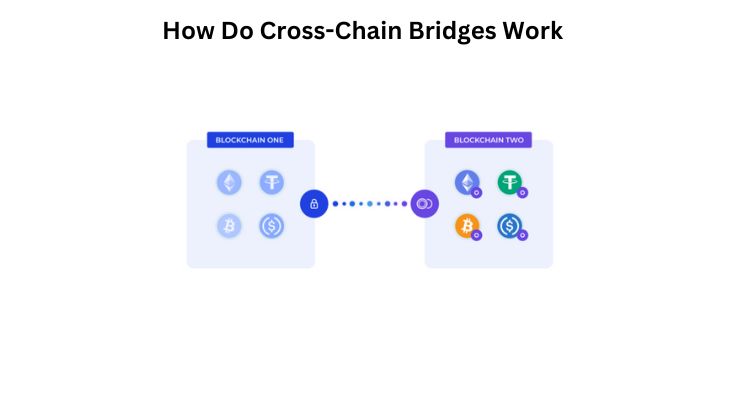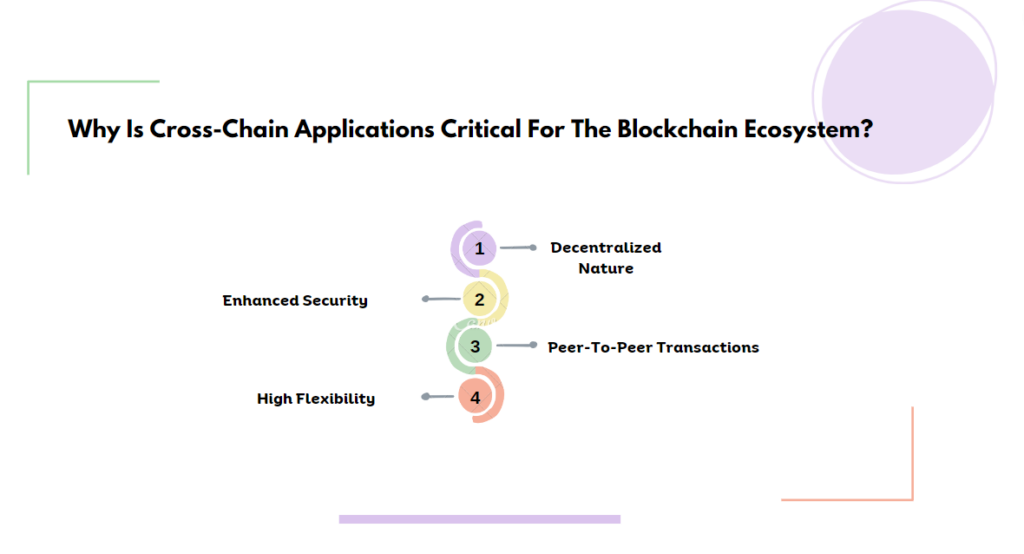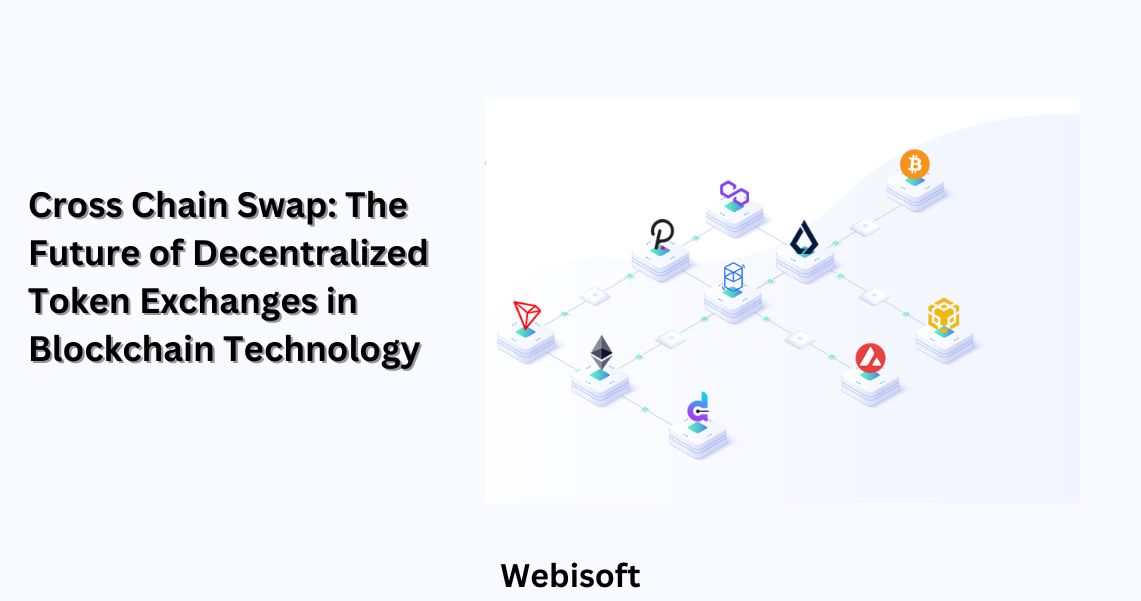In the ever-evolving world of blockchain technology, cross chain swap are emerging as a revolutionary innovation.
They are enabling seamless token exchanges across different blockchain protocols, eliminating the need for intermediaries.
Also, they enhance interoperability within the blockchain ecosystem. This article delves into the concept of cross-chain swaps, their workings, and their critical role in the blockchain ecosystem.
Contents
What Limitations Did The Siloed Decentralized System Have?
Despite its vastness and diversity, the blockchain ecosystem has been grappling with a significant limitation – the Siloed nature of its platforms.
From first-generation blockchains like Bitcoin to third-generation ones like Avalanche. Each operates in isolation with its separate and distinct chain.
This isolation has been a stumbling block in seamless token exchange across blockchain protocols. For instance, Ethereum’s native tokens cannot be exchanged on another protocol, such as Avalanche.
This limitation has posed a significant challenge for individuals and businesses using blockchain, especially with the growing trend of decentralization and the introduction of advanced blockchains.
Take Avalanche as an example. Since its launch in September 2020, over 225 projects have been built on the platform, and AVAX tokens are being traded in large volumes. People started to invest in different blockchains.
Therefore the requirement for technology supporting cross-chain token exchange became more apparent. The siloed decentralized system also had its limitations in terms of interoperability.
Many projects were built on the Ethereum protocol, such as Uniswap and Dave. These projects can easily interact for exchanging cryptocurrencies, performing trades and swapping assets.
However, even with these facilities, blockchains could not allow users to exchange tokens on different protocols.
The limitations of the siloed decentralized system have spurred the need for a technology that can address the exchanging or swapping challenge on multiple blockchain platforms. This is where cross-chain swaps come into play.
They have emerged as a solution, enabling token holders of a particular blockchain to deploy those tokens on different ecosystems.
What Is The Cross Chain Swap?
Cross-chain swaps, or atomic swaps, are smart contract technology. It enables the exchange of tokens between two distinct blockchain ecosystems without any intermediary or central authority.
For example, it allows users to swap ERC-20 tokens with BSC tokens directly from their wallets, making the process faster and more efficient.
The concept of cross-chain swaps was first proposed by Tier Nolan and later implemented by Charlie Lee, the creator of Litecoin, in 2017.

How Do Cross-Chain Bridge Work?
Cross-chain swaps use smart contracts to facilitate token exchanges between two parties on two different blockchains.
These smart contracts employ a technology called Hash Time Lock Contracts (HTLCs). It locks transactions with unique combinations to ensure verification on both ends.
1. Hashlock
Hashlock technology enables smart contracts to lock coins with a secret key, accessible only to the swap initiator.
Once the deposit verification is done, he reveals the secret combination, allowing the receiver to unlock the deposit.
2. Timelock
The Timelock mechanism uses time constraints to secure transactions on the blockchain network. It ensures quick completion of the transactions.
Why Is Cross-Chain Applications Critical For The Blockchain Ecosystem?

Cross-chain swaps are a game-changer in the blockchain ecosystem. They revolutionize the token exchange process by eliminating third-party entities. This allows for simultaneous transactions across multiple blockchains.
Cross-chain swaps can make payments in a specific token, even if the parties involved are on different blockchain protocols. This technology enables cross-chain swapping without the need for a centralized exchange platform.
As no intermediaries are involved in the cross-chain swap, transactions are faster, more affordable, and less prone to potential security breaches common in centralized exchange systems.
Cross-chain swaps are gaining popularity across various industries, including banking, energy, healthcare, government, and finance. They are not limited to trading and exchange only.
Many industries are leveraging the core advantage of this technology to develop trustless and decentralized exchanges. This allows individuals to trade on their preferred blockchain.
The benefits of cross-chain swaps are manifold:
1. Decentralized Nature
Cross-chain swaps promote independence by providing a decentralized ecosystem for multi-blockchain exchange. This aligns with the global trend towards decentralization.
2. Enhanced Security of Cross-Chain Liquidity
Cross-chain swaps employ Hash Time Lock Contracts (HTLCs) that ensure enhanced security.
They guarantee a refund in case of a conflict or if the first participant (sender) changes their mind for some reason. This leaves no room for security concerns.
3. Low-Cost, Peer-To-Peer Transactions
Centralized exchanges often involve high switching costs and numerous formalities.
Cross chain swaps, on the other hand, allow nodes to join the exchange token and peer-to-peer blockchain networks. This saves time and ensures low cost as no centralized entity controls the protocol.
4. High Flexibility
Cross-chain swaps allow the exchange of all tokens. You don’t need to convert tokens into specific protocol-based tokens as they require to do in centralized exchanges.
This high flexibility is one of the critical advantages of cross-chain swaps. Cross-chain swaps present a futuristic model for decentralizing token exchange and payments.
They allow two participants to swap their tokens on completely different protocols without intermediaries.
As organizations increasingly prefer decentralized systems, it is evident that cross-chain swaps will be immensely popular in this advanced world.
End Note
Cross-chain swaps represent a futuristic model for decentralizing token exchanges and payments. Crosschain allow users to swap tokens on completely different protocols without intermediaries, thus promoting decentralization.
As organizations increasingly prefer decentralized systems and develop blockchain-based solutions on multiple protocols, cross-chain swaps are set to gain immense popularity.
Frequently Asked Questions
How Do Cross Chain Swaps Work?
Cross-chains swaps use smart contracts and a technology called Hash Time Lock Contracts (HTLCs) to facilitate token exchanges between two parties on two different blockchains.
Why Are Cross-Chain Swaps Important?
Cross-chain bridge are critical for the blockchain ecosystem as they eliminate third-party entities from the token exchange process and facilitate multi-blockchain transactions.

